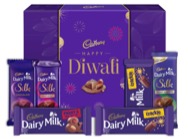Nikhil Gharekhan, Managing Partner, Presciant
With the holiday season upon us, the prevailing feeling the world over is more fear than cheer, more melancholy than jolly, more restive than festive! As health experts urge people to cancel the holidays, families are resigning themselves to forego seeing loved ones, to call off travel plans, and to abandon cherished traditions. If the recent muted celebrations of Thanksgiving and Diwali are any indication, the holiday spirit will be a dud for many households.
However, brands should not see this as a hand-wringing season of lost sales. Rather they should see this as a chance to step in and save the holidays, to fill the void and truly bring meaning into people’s lives.
Consumers are open to letting brands into their lives. Loneliness and depression levels are at all-time highs, and brands that can bring cheer, give a sense of purpose, fulfill a wish, provide companionship, or just make them smile will be welcome this holiday season.
If marketers are worried that holidays are the domain of entrenched brands, they should think again. The pandemic has been a time of shifting loyalties—almost 4/5 of US consumers have changed brands—so the time is ripe for brands to try and gain relevance this season. But Covid-19 is not the only driver of opportunity for brands during holidays. The world of celebrations has been changing dramatically for several years.
New festivals are emerging and entering the mainstream. Kwanzaa was created in 1966, and now millions observe this celebration of African culture across the globe. Singles Day originated in China as recently as 1993, and is mostly still under the radar in the US, but now represents the largest single shopping day in the world, with $40 billion in sales.
Celebrations are being transplanted to new geographies. The American tradition of Halloween has been taking over in the UK, at the expense of the local Guy Fawkes Day. The Hindu festival of Holi has spawned events and races across the world and features the traditional throwing of powdered colors onto participants. Russia has added “Capitalist Christmas” to its list of celebrations which carry on almost without a break for over a month!
Well-established festivals are seeing their rituals being upended to reflect the modern consumer. Consider Diwali, a centuries-old festival of India. The exchange of home-style sweets or mithai with friends had always been a defining tradition. Now branded chocolate is taking over as the sweet gift of choice. Decorative mud lamps with oil and wick are giving way to electric lights. Even fireworks are being replaced by eco-friendly “green crackers” or being abandoned completely.
Digital trends are impacting festivals too. Gifts are being sent across the globe with the tap of a screen. Families are gathering over Zoom (this is likely to endure post-pandemic). The Chinese tradition of hongbao (red paper gift envelopes) is being replaced with digital pay apps.
So how should brands take advantage of this shifting landscape of celebrations and swoop in to give our festivals heightened relevance in troubled times? Here are some takeaways:
- Look for the voids and fill them: The Hallmark brand is well known for spotting gaps in calendars, exploiting unmet
emotional needs, and popularizing onceobscure festivals like Valentine’s Day and Mother’s Day. But that is not to say that brands need to find a random day to monetize (National Bubble Wrap Appreciation Day, anyone?). Rather brands should put themselves ahead of consumers, examine the dimensions impacting holidays—pandemic concerns, globalization, transplanting, modernization, digital, and capitalize on the opportunities that best fit with their positioning. WeChat spotted a chance to infuse digital into the hongbao tradition, created a pay app, and also surrounded it with messaging and social media capabilities.
- Embed the brand in the culture: The Cadbury brand has been the single biggest driver of the move
from mithais to chocolates for the Diwali festival in India.This did not happen overnight. Cadbury spent years shaping the brand to be inherently part of Indian culture. “Cadbury is in our blood. It is a completely Indian product to us,” says a local chocolatier about this quintessentially British brand. And then the brand subtly shifted the thinking that celebrations are about sharing something sweet, which does not have to be home-made.
- Reinforce memories, year over year: Brands that return each year with consistent messages which tug at emotional
needs earn consumers’ loyalty.The Coca-Cola brand has been featuring its polar bears to tap into the holiday spirit of friendship each year since 1922. Lexus has entrenched itself as the luxury brand for holiday gift-giving with 20 years of its “December to Remember” campaign. And if you have a solid memory-inducing brand, you may want to not mess with it—the Hershey’s Kisses brand recently faced a backlash for daring to change its classic Christmas bells ad, which had been running since 1989.
Be mindful of cultural nuances: Brands need to watch out for the inherent and unspoken taboos that may surround a particular culture or occasion. Apparel brands such as Mango, Cos and Oscar de la Renta have been catering to the well-heeled Middle Eastern set, but trying to balance the flair of high fashion with the intrinsic modesty associated with Ramadan. By contrast, Burberry’s tribute to the Chinese New Year in 2019 faced criticism for being creepy, downbeat, and completely off culture.
- Localize: Brands should look at festivals which are specifically local, and adapt marketing to them, if they really want to be seen as part of the culture. Mondelez has introduced specific local flavors to match local holidays in Malaysia, such as durian and Kopi-C to celebrate Malaysia Day.
- Get the tactics right: Of course, through all of this, marketers must not forget the basic blocking and tackling needed to build their brands—identifying their target audiences, defining their unique messages, finding the right timing, and measuring their progress.
Trying to save the holidays is not easy for brands to do—but the prize money is enticing. The holiday season can contribute as much as 50% of a brand’s annual sales. Huge sums are at stake—brands are expected to rake in $750 billion in the 2020 holiday season in the US, and in China, retail sales during the 2020 Golden Week reached $235 billion in the span of a mere seven days. The real reward for bringing meaning to people’s lives is not short-term sales, but for brands to earn a place in consumers’ memory banks, providing an enduring stream of cash flows into the future.
Nikhil Gharekhan is Managing Partner and co-Founder of Presciant, a new brand consultancy dedicated to optimizing ‘brand alpha’: helping companies use brand to gain a financial edge. Before this, Nik was Senior Partner, Global Brand Consulting at Ogilvy for 9 years. Prior to this, he was Managing Director of Millward Brown / Kantar’s consultancy in North America.
For more information, please visit: www.presciant.com

 emotional needs, and popularizing onceobscure festivals like Valentine’s Day and Mother’s Day. But that is not to say that brands need to find a random day to monetize (National Bubble Wrap Appreciation Day, anyone?). Rather brands should put themselves ahead of consumers, examine the dimensions impacting holidays—pandemic concerns, globalization, transplanting, modernization, digital, and capitalize on the opportunities that best fit with their positioning. WeChat spotted a chance to infuse digital into the hongbao tradition, created a pay app, and also surrounded it with messaging and social media capabilities.
emotional needs, and popularizing onceobscure festivals like Valentine’s Day and Mother’s Day. But that is not to say that brands need to find a random day to monetize (National Bubble Wrap Appreciation Day, anyone?). Rather brands should put themselves ahead of consumers, examine the dimensions impacting holidays—pandemic concerns, globalization, transplanting, modernization, digital, and capitalize on the opportunities that best fit with their positioning. WeChat spotted a chance to infuse digital into the hongbao tradition, created a pay app, and also surrounded it with messaging and social media capabilities. from mithais to chocolates for the Diwali festival in India.This did not happen overnight. Cadbury spent years shaping the brand to be inherently part of Indian culture. “Cadbury is in our blood. It is a completely Indian product to us,” says a local chocolatier about this quintessentially British brand. And then the brand subtly shifted the thinking that celebrations are about sharing something sweet, which does not have to be home-made.
from mithais to chocolates for the Diwali festival in India.This did not happen overnight. Cadbury spent years shaping the brand to be inherently part of Indian culture. “Cadbury is in our blood. It is a completely Indian product to us,” says a local chocolatier about this quintessentially British brand. And then the brand subtly shifted the thinking that celebrations are about sharing something sweet, which does not have to be home-made. needs earn consumers’ loyalty.The Coca-Cola brand has been featuring its polar bears to tap into the holiday spirit of friendship each year since 1922. Lexus has entrenched itself as the luxury brand for holiday gift-giving with 20 years of its “December to Remember” campaign. And if you have a solid memory-inducing brand, you may want to not mess with it—the Hershey’s Kisses brand recently faced a backlash for daring to change its classic Christmas bells ad, which had been running since 1989.
needs earn consumers’ loyalty.The Coca-Cola brand has been featuring its polar bears to tap into the holiday spirit of friendship each year since 1922. Lexus has entrenched itself as the luxury brand for holiday gift-giving with 20 years of its “December to Remember” campaign. And if you have a solid memory-inducing brand, you may want to not mess with it—the Hershey’s Kisses brand recently faced a backlash for daring to change its classic Christmas bells ad, which had been running since 1989. Be mindful of cultural nuances: Brands need to watch out for the inherent and unspoken taboos that may surround a particular culture or occasion. Apparel brands such as Mango, Cos and Oscar de la Renta have been catering to the well-heeled Middle Eastern set, but trying to balance the flair of high fashion with the intrinsic modesty associated with Ramadan. By contrast, Burberry’s tribute to the Chinese New Year in 2019 faced criticism for being creepy, downbeat, and completely off culture.
Be mindful of cultural nuances: Brands need to watch out for the inherent and unspoken taboos that may surround a particular culture or occasion. Apparel brands such as Mango, Cos and Oscar de la Renta have been catering to the well-heeled Middle Eastern set, but trying to balance the flair of high fashion with the intrinsic modesty associated with Ramadan. By contrast, Burberry’s tribute to the Chinese New Year in 2019 faced criticism for being creepy, downbeat, and completely off culture.